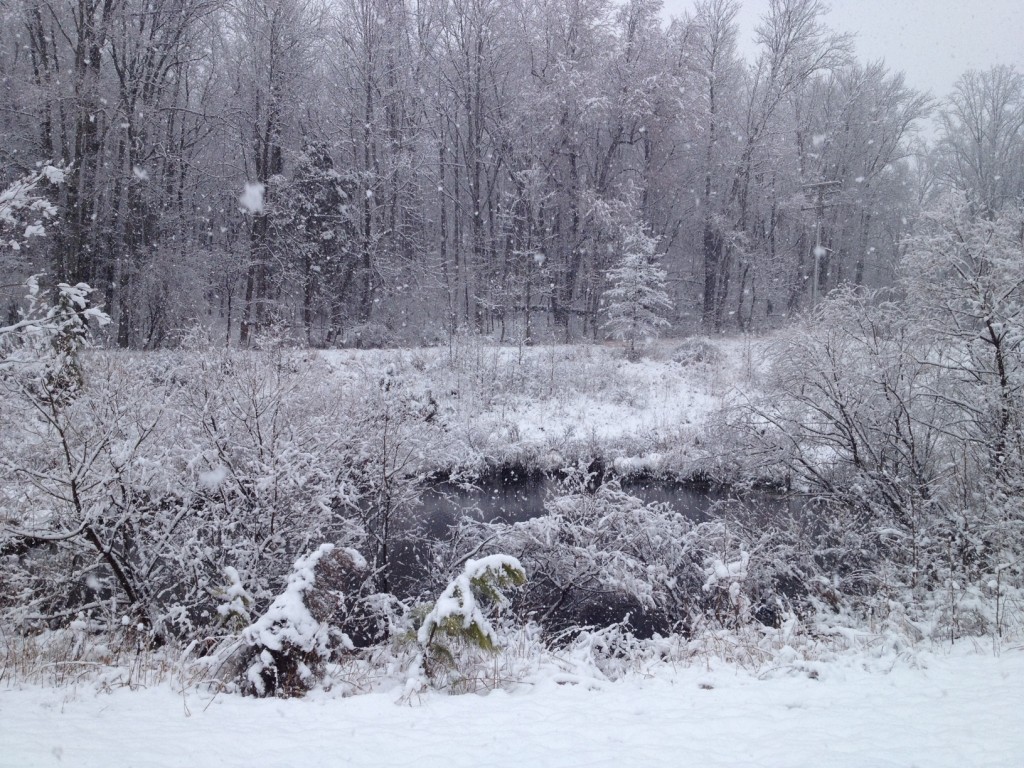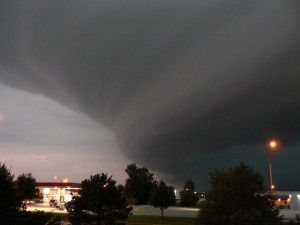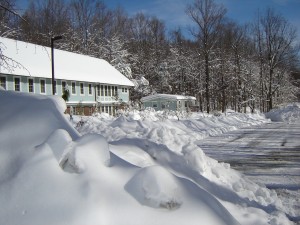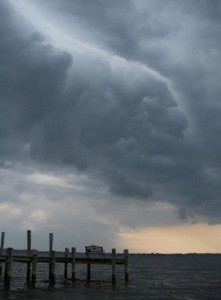by Kristen Minogue

SERC pond on the morning of March 25. The short-lived spring snowstorm dumped up to 6 inches throughout Maryland, but most of it melted within 24 hours. (Kristen Minogue)
If the massive snowstorms that pummeled the northeast this winter—and at least one downpour in spring—seem out of place in a warming world, climate scientists have a message: Don’t fret, it’s just physics.
For several years, scientists have anticipated a future of “less snow, more blizzards” in the winters ahead. The message may sound like a paradox. But for the planet, it boils down to one simple truth: Warm air holds more moisture than cold air.




